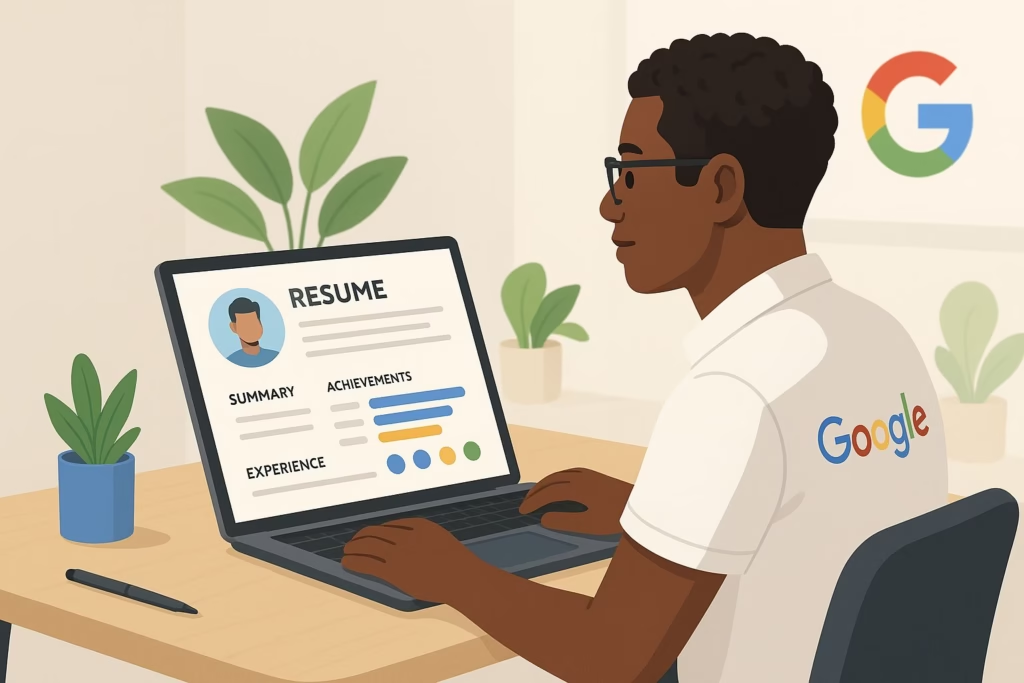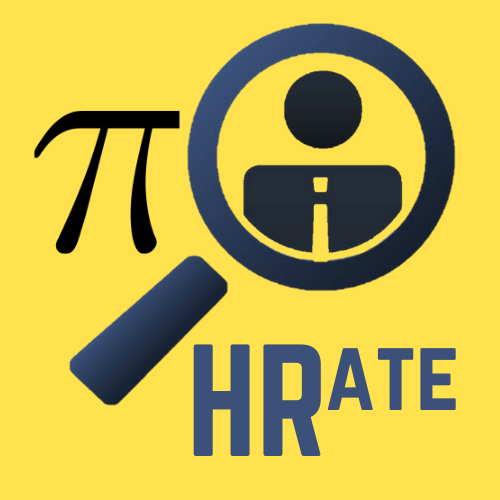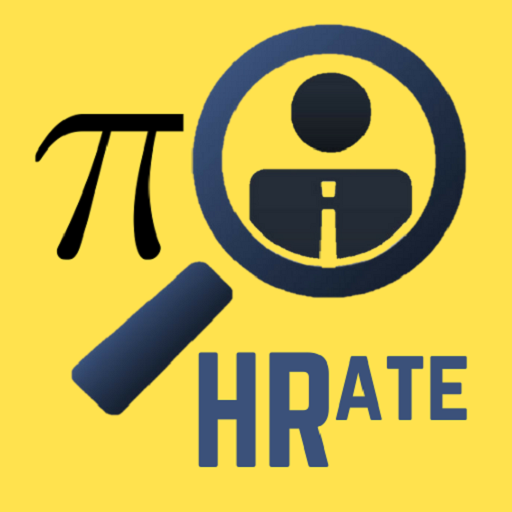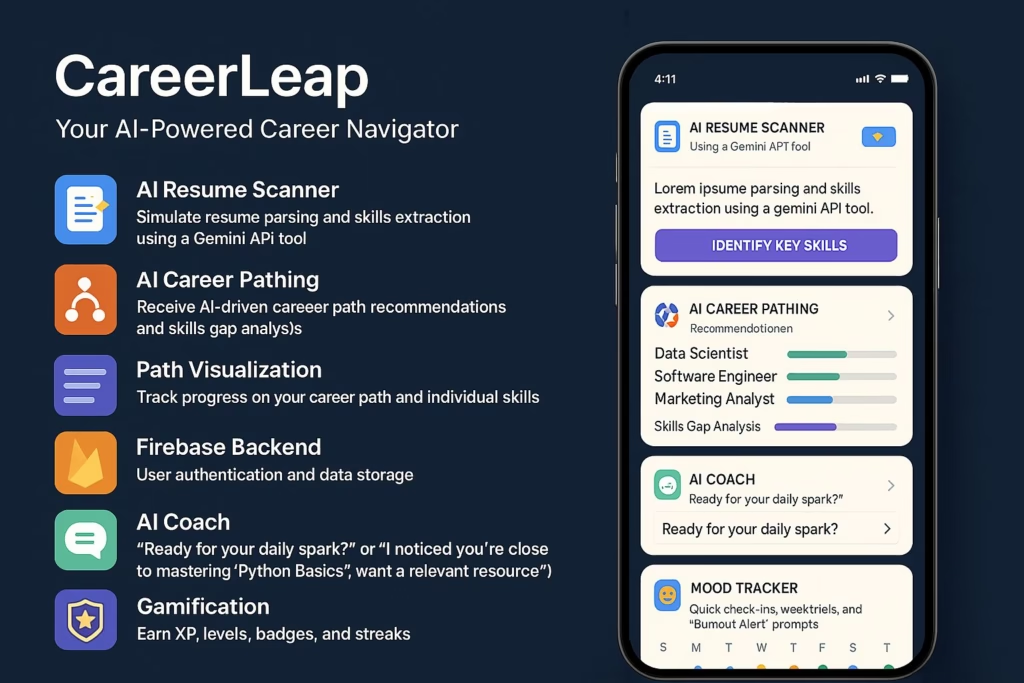From Application to Offer: A Google Recruiter’s Insider Perspective

Landing a job at Google is often seen as the pinnacle of a tech career. But what does it really take to navigate their famously rigorous hiring process? What do recruiters actually look for when sifting through thousands of applications, and how can candidates best position themselves for success? To get the inside scoop, we sat down with Sarah Chen, a seasoned former Google recruiter who specialized in hiring for engineering and product management roles. Sarah shares her invaluable insights, demystifying the journey from initial application to the coveted offer letter.
The Interviewer: Sarah, thank you for joining us. Many aspiring professionals dream of working at Google. Can you start by giving us a high-level overview of the typical Google hiring process from a recruiter’s standpoint?
Sarah Chen: Absolutely. The Google hiring process is designed to be thorough and fair, ensuring we find candidates who not only possess the required technical skills but also align with our culture and values. Generally, it involves several stages. It typically starts with an online job application, followed by a recruiter screen (a phone or video call). If that progresses well, candidates usually enter an “interview loop,” which consists of multiple interviews – often four to six – covering technical skills, problem-solving abilities, and behavioral aspects like leadership and teamwork. These interviews are then reviewed collectively by an interview committee, and if successful, the candidate’s packet goes to a hiring committee for a final decision before an offer is extended. It’s a multi-layered approach, focused on evaluating candidates across various dimensions.
Part 1: Mastering the Application – Making Your Resume Shine
Interviewer: Let’s start at the very beginning: the application. With potentially thousands of resumes for a single role, how does a Google recruiter even begin to sift through them? What makes an application truly stand out?
Sarah Chen: That’s a critical first step, and it’s often underestimated. Recruiters, myself included, spend a significant amount of time reviewing resumes. We’re looking for relevance, impact, and clarity. Firstly, resume screening is heavily influenced by the specific role you’re applying for. A generic resume rarely cuts it. Candidates must tailor their resume to highlight the skills and experiences directly relevant to the job description. We look for keywords that match the requirements, but more importantly, we look for evidence of impact.
Think about using the STAR method (Situation, Task, Action, Result) implicitly within your bullet points. Instead of just saying “Managed a project,” say something like, “Led a cross-functional team of 5 engineers to develop a new feature, resulting in a 15% increase in user engagement and a 10% reduction in bug reports.” Quantifiable results are gold. They provide concrete evidence of your capabilities.
Many companies, including Google, utilize Applicant Tracking Systems (ATS) to help manage the volume of applications. While ATS primarily looks for keyword matching, human recruiters then review those flagged applications. So, ensure your resume includes relevant keywords naturally, but don’t just stuff them in – demonstrate how you’ve used those skills to achieve positive outcomes. Clarity is also key; use clean formatting, clear language, and prioritize the most relevant information. Avoid jargon where possible, unless it’s standard industry terminology for the role.
Interviewer: So, tailoring and quantifiable results are paramount. What are some common mistakes candidates make at this stage?
Sarah Chen: The biggest mistake is applying with a one-size-fits-all resume. Another is focusing solely on responsibilities rather than accomplishments. Recruiters want to know what you specifically achieved, not just what your team or department did. Also, typos and grammatical errors, while seemingly minor, can signal a lack of attention to detail, which is crucial in technical roles. Lastly, ensure your resume is concise – typically one to two pages for most roles. Recruiters have limited time per resume.
Part 2: The Recruiter Screen – Your First Impression
Interviewer: Assuming a resume passes the initial screen, the next step is often the recruiter screen. What’s the purpose of this initial conversation, and what should candidates expect?
Sarah Chen: The recruiter screen is essentially a preliminary conversation to assess mutual fit. It’s not a deep technical dive, but rather a way for me, the Google recruiter, to understand your motivations, verify basic qualifications, discuss your career aspirations, and get a sense of your communication style. We’ll typically cover:
- Your Background: A brief overview of your resume and relevant experience. This is where your elevator pitch comes in handy – concisely summarizing your key skills and career goals.
- Motivation: Why Google? Why this specific role? What interests you about our products or technologies? Genuine curiosity and thoughtful answers are important here.
- Logistics: Location preferences, work authorization/visa status, and sometimes salary expectations (though this can vary).
- Basic Qualifications Check: Confirming you meet the fundamental requirements listed in the job description.
- Process Overview: I’ll explain the next steps in the Google hiring process, timelines, and what to expect in subsequent interviews.
It’s a chance for you to learn more about the role and the team, too. Ask clarifying questions! This is your opportunity to make a strong first impression and ensure you’re aligned with the opportunity before investing time in more intensive interviews. Preparation is key – know your resume inside out, research the role and Google’s mission, and be ready to articulate why you’re a good fit.
Interviewer: How should candidates prepare for this conversation?
Sarah Chen: Research is paramount. Understand Google’s products, recent news, and company culture. Think about why you want to work at Google and specifically in the role you’ve applied for. Prepare a concise summary of your background and key achievements – your personal narrative. Be ready to talk about your strengths and weaknesses, and perhaps a time you faced a challenge and how you overcame it. Honesty and enthusiasm go a long way. It’s also a good time to think about any questions you have for the recruiter. What’s the team culture like? What are the biggest challenges the team faces? What does success look like in this role?

Part 3: The Interview Loop – Diving Deep
Interviewer: Once past the recruiter screen, candidates enter the core interview loop. This is often the most daunting part. Can you break down the different types of interviews candidates typically face at Google?
Sarah Chen: Certainly. The interview loop is designed to rigorously assess a candidate’s skills and potential. At Google, especially for technical roles, interviews generally fall into a few key categories:
- Coding Interviews: These are fundamental for software engineering roles. You’ll typically be asked to solve problems using data structures and algorithms. The focus isn’t just on getting the right answer, but how you get there. This includes clarifying the problem, discussing different approaches, analyzing time and space complexity (Big O notation), writing clean, efficient code, and testing your solution thoroughly. Expect questions related to arrays, strings, linked lists, trees, graphs, dynamic programming, etc.
- System Design Interviews: For more experienced roles, these interviews assess your ability to design scalable, reliable, and maintainable systems. You might be asked to design something like Twitter’s feed, a URL shortener, or a distributed caching system. It’s about understanding trade-offs, components, databases, APIs, bottlenecks, and how different parts of a large system interact. Communication and logical thinking are key here.
- Behavioral Interviews (often called “Googleyness” interviews): These interviews focus on assessing your alignment with Google’s culture and values. We look for attributes like:
- Leadership: Not just managing people, but taking initiative, driving projects forward, and influencing others.
- Collaboration: How well you work with others, handle disagreements, and contribute to team success.
- Ambiguity Tolerance: Google operates in a fast-paced, often ambiguous environment. Can you navigate uncertainty and make progress without perfect information?
- Bias for Action: Do you proactively identify issues and take steps to address them?
- Intellectual Curiosity: Are you passionate about learning and exploring new ideas?
- Role-Related Knowledge: Specific experience relevant to the role you’re applying for.
Interviewer: You mentioned the STAR method for behavioral questions. Can you elaborate on that?
Sarah Chen: The STAR method (Situation, Task, Action, Result) is the gold standard for answering behavioral questions effectively. It provides structure and ensures you cover all the necessary components:
- Situation: Briefly describe the context of the situation. Where were you? Who was involved? What was the challenge or scenario?
- Task: What was your specific responsibility or goal in that situation? What needed to be done?
- Action: Describe the specific steps you took to address the task or challenge. Focus on your individual contribution, especially in team settings. Use “I” statements.
- Result: What was the outcome of your actions? Quantify the results whenever possible. What did you learn? How did it impact the project or team?
For example, if asked, “Tell me about a time you faced a challenging technical problem,” a STAR answer might start with the situation (e.g., “While working on Project X, we encountered a persistent performance bottleneck in the data processing pipeline…”), detail the task (e.g., “My task was to identify the root cause and implement a solution within two weeks…”), describe the actions taken (e.g., “I analyzed logs, profiled the code, identified an inefficient database query, redesigned the query, and implemented caching…”), and conclude with the result (e.g., “This reduced processing time by 40% and resolved the bottleneck, allowing the project to launch on schedule.”). Practicing answers using STAR helps ensure your responses are comprehensive, concise, and impactful, clearly demonstrating your skills and experiences to the interviewer and showcasing your potential Googleyness.
Interviewer: What are some common Google interview questions candidates should anticipate, both technical and behavioral?
Sarah Chen:
- Technical:
- “Given a binary tree, find the lowest common ancestor of two nodes.” (Tree traversal, recursion)
- “Implement a function to reverse a linked list.” (Pointers, iterative/recursive approaches)
- “Design a system like TinyURL.” (Hashing, databases, scalability)
- “How would you design a news feed for millions of users?” (Distributed systems, databases, caching, APIs)
- “Given an array of integers, find the contiguous subarray with the largest sum.” (Kadane’s algorithm)
- Behavioral:
- “Tell me about a time you had to influence a team or stakeholder.”
- “Describe a project you are particularly proud of and why.”
- “How do you handle disagreements with a colleague or manager?”
- “Tell me about a time you failed or made a significant mistake.”
- “Describe a situation where you had to deal with ambiguity.”
- “How do you prioritize your work when you have multiple deadlines?”
Remember, the interviewer is assessing not just what you say, but how you say it – your thought process, your communication clarity, and your ability to collaborate even during the interview itself.
Part 4: Avoiding Common Pitfalls
Interviewer: What are the most frequent mistakes you observed candidates making during the Google hiring process?
Sarah Chen: There are several recurring themes:
- Lack of Preparation: This is the most significant. Not researching the company, the role, or practicing interview questions. Candidates might show up expecting to wing it, which rarely works for competitive roles.
- Generic Answers: Especially in behavioral interviews, vague or generic answers don’t provide concrete evidence of skills or experience. Using the STAR method and specific examples is crucial.
- Poor Communication: This includes not asking clarifying questions during technical interviews, mumbling, not explaining thought processes clearly, or being defensive when probed. Communication is a key part of Googleyness.
- Not Asking Questions: Failing to ask thoughtful questions at the end of an interview signals a lack of engagement or interest. It’s a missed opportunity to gather valuable information and show your curiosity.
- Arrogance or Entitlement: While confidence is good, appearing arrogant, dismissive of interviewers’ suggestions, or acting entitled can be a major red flag. Humility and a willingness to learn are highly valued.
- Focusing Only on Technical Skills: Forgetting that behavioral aspects, teamwork, and leadership potential are equally important, especially for career growth.
- Misunderstanding the Role: Applying for roles that aren’t a good fit, or not understanding the specific challenges and responsibilities, leads to mismatched expectations.
Part 5: Top Tips for Success
Interviewer: Based on your experience, what are your top Google interview tips for candidates aiming for a Google career?
Sarah Chen: My advice boils down to preparation, authenticity, and a focus on demonstrating value:
- Deep Dive Research: Go beyond the homepage. Understand Google’s mission, values, products, recent projects, and the specific team/role you’re targeting. Read engineer blogs, watch keynotes.
- Master the Fundamentals: If you’re interviewing for a technical role, ensure your grasp of data structures, algorithms, and complexity analysis is solid. Practice coding problems consistently. Platforms like LeetCode, HackerRank, and GeeksforGeeks are excellent resources.
- Practice Behavioral Questions with STAR: Prepare specific examples for common behavioral questions using the STAR method. Map your experiences to Google’s core competencies (leadership, problem-solving, collaboration, etc.).
- Mock Interviews: Conduct mock interviews with peers, mentors, or career coaches. This helps simulate the pressure and refine your delivery, especially for technical problem-solving and behavioral responses.
- Clarify, Clarify, Clarify: In technical interviews, never assume. Ask clarifying questions about constraints, edge cases, expected inputs/outputs, and scale. This shows critical thinking.
- Think Aloud: Vocalize your thought process during technical interviews. Explain your approach, why you’re choosing certain data structures or algorithms, and the trade-offs involved. This is often more important than the final code.
- Formulate Insightful Questions: Prepare 2-3 thoughtful questions for each interviewer. Ask about challenges, team dynamics, growth opportunities, or the interviewer’s own experience at Google. Avoid questions easily answered by a quick Google search.
- Be Authentic and Enthusiastic: Let your personality and genuine interest shine through. Recruiters and interviewers want to see passion.
- Understand “Googleyness”: Reflect on how your experiences align with Google’s cultural attributes. How have you demonstrated leadership, handled ambiguity, or collaborated effectively?
- Patience and Persistence: The Google hiring process can take time. Stay patient, follow up appropriately if needed, and don’t get discouraged by setbacks. Every interview is a learning experience.
Part 6: The Offer and Beyond
Interviewer: After completing the interview loop, what happens next? How does the application to offer journey conclude?
Sarah Chen: Once all interviews are completed, the interviewers submit detailed feedback. As the Google recruiter, I compile this feedback along with your resume and any other relevant information into a “candidate packet.” This packet is then reviewed internally by an interview committee, composed of Googlers who weren’t your interviewers. They assess the feedback against Google’s hiring standards to ensure consistency and fairness across all candidates.
If the interview committee recommends moving forward, the packet is escalated to a dedicated Hiring Committee. This committee, often including senior leaders, makes the final hiring decision based on the packet and the collective feedback. They evaluate candidates holistically, looking for strong alignment across all assessment criteria.
If the Hiring Committee approves, the final step involves compensation review and approval by relevant authorities. Only then can I, as the recruiter, extend the formal offer. This entire process, especially the committee reviews, can take several weeks, so patience is essential. It’s a deliberate process designed to ensure we’re bringing in the best talent who will thrive at Google.
Interviewer: What advice do you have for candidates waiting for the final decision?
Sarah Chen: Continue focusing on your current role or other opportunities. Avoid dwelling excessively on the outcome. If you haven’t heard back within the expected timeframe, it’s appropriate to politely follow up with your recruiter. Remember that even if this specific opportunity doesn’t work out, the feedback you received can be invaluable for future applications. Google often encourages candidates who performed well but weren’t selected to reapply after a period of gaining more experience.
Conclusion: Building Your Google Career
Interviewer: Sarah, this has been incredibly insightful. To wrap up, what’s the single most important piece of advice you’d give someone aspiring to build a career at Google?
Sarah Chen: If I had to choose just one thing, it would be: Be prepared, be relevant, and be authentic. Understand the requirements of the role, demonstrate your impact through specific examples, and let your genuine enthusiasm and personality show. Google isn’t just looking for brilliant minds; they’re looking for collaborators, problem-solvers, and individuals who are passionate about making a difference. Treat the application and interview process as a chance to showcase how you can contribute to Google’s mission. By focusing on these elements, you significantly increase your chances of navigating the Google hiring process successfully and ultimately securing that desired offer.
Interviewer: Thank you, Sarah, for sharing your invaluable expertise. Your insights provide a clear roadmap for anyone navigating the path to a Google career.
Sarah Chen: You’re most welcome. Best of luck to all the aspiring Googlers out there!
What makes a Google job application stand out?
Tailoring your resume to the specific job description, using quantifiable achievements (e.g., ‘increased efficiency by 20%’), incorporating relevant keywords naturally, and demonstrating clear impact are crucial. Avoid generic applications and focus on showcasing specific accomplishments rather than just responsibilities.
What is the purpose of the recruiter screen at Google?
The recruiter screen is a preliminary check to assess basic qualifications, motivation for the role and Google, communication skills, and logistical details like location and salary expectations. It’s a mutual fit conversation before moving to more intensive interviews.
What are the main types of interviews in the Google interview loop?
Google typically employs technical interviews (coding, system design) focused on problem-solving and technical skills, and behavioral interviews (assessing ‘Googleyness,’ leadership, collaboration) which often utilize the STAR method for answering questions.
How important is the STAR method for Google behavioral interviews?
The STAR method (Situation, Task, Action, Result) is highly important. It provides a structured way to answer behavioral questions, ensuring you provide concrete examples of your skills, actions, and the outcomes achieved, which helps interviewers assess your competencies and ‘Googleyness’.
What common mistakes should candidates avoid during the Google hiring process?
Common mistakes include lack of preparation, generic answers, poor communication, not asking clarifying questions, appearing arrogant, focusing solely on technical skills, and misunderstanding the role requirements.
What are the key skills needed for a career at Google?
Beyond technical proficiency, Google values strong problem-solving skills, leadership potential, collaboration, communication, adaptability, intellectual curiosity, and a bias for action. Demonstrating ‘Googleyness’ is crucial.
What happens after the Google interviews are completed?
After interviews, feedback is compiled into a candidate packet, reviewed by an internal interview committee, and potentially escalated to a Hiring Committee for a final decision. This process ensures fairness and thorough evaluation before an offer is extended.
- Stop Preparing for the Google Interview of 2020. Here’s What Changed.
- We Asked 100 Google Engineers How They Use Gemini: Here’s What We Learned
- Why Your Next Promotion Might Depend on Your AI Literacy (Not Your Code)
- From Marketing to Machine Learning: How One Googler Reinvented Their Career
- A Tuesday at Google: Why Our Offices Are Buzzing Again




